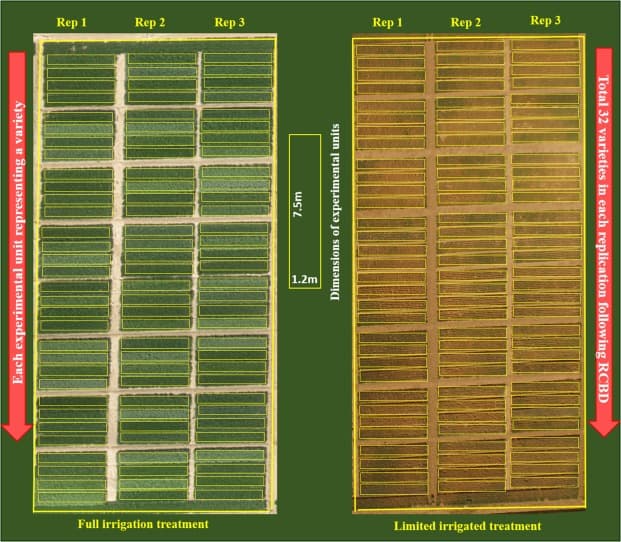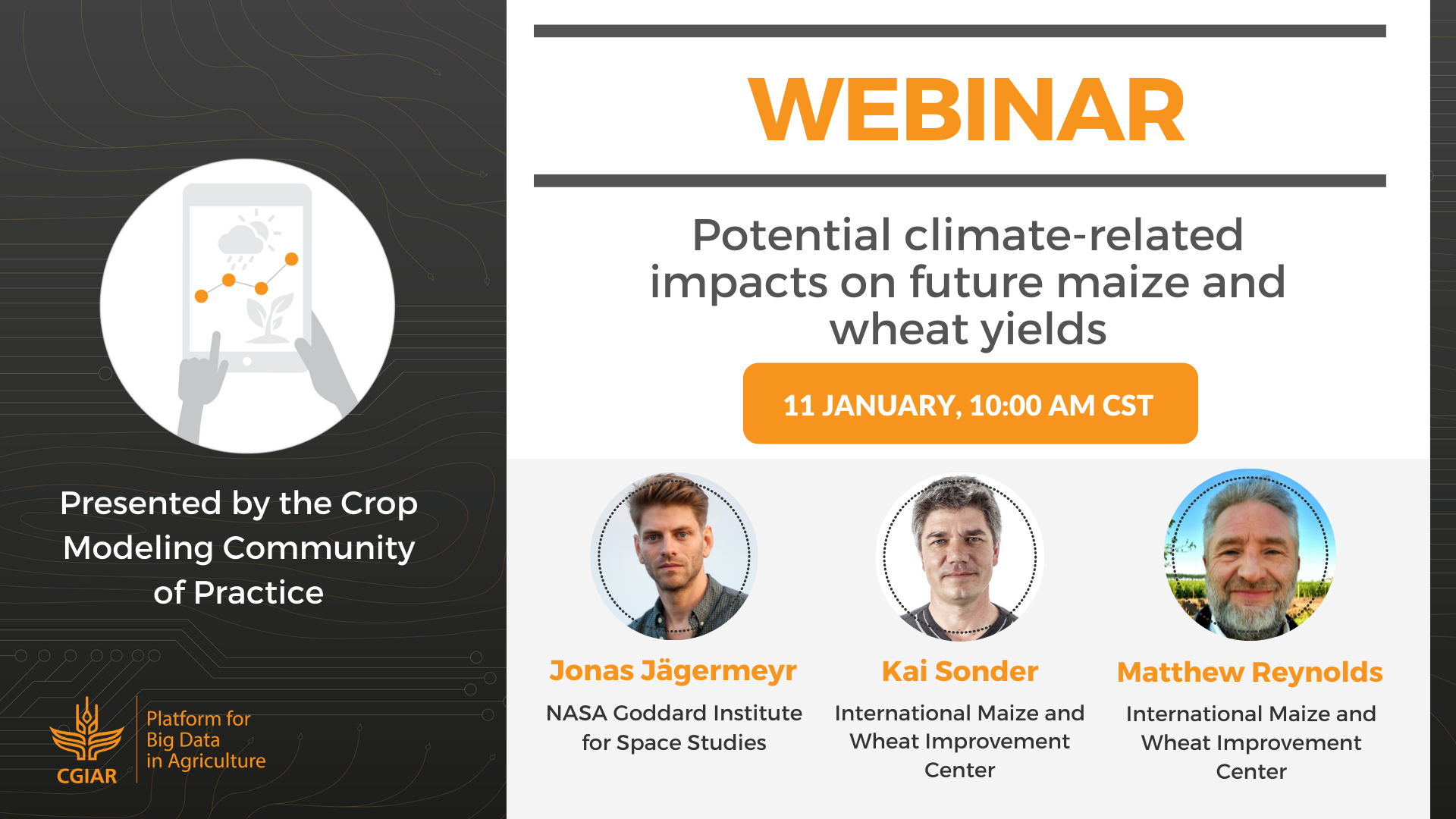Predicting Wheat Yield using a Multi-Spectral UAV Platform

Correlation coefficients of normalized difference vegetation index (NDVI) derived from unmanned aerial vehicles (UAVs) and GreenSeeker with agronomic traits and grain yield under (a) full irrigation and (b) limited irrigation treatments at different growth stages (stem elongation to maturation). Color intensities indicate degrees of positive and negative significance at (P ≤ 0.05).
Vegetation indices, especially normalized difference vegetation index (NDVI), are highly associated with crop yield and yield-related traits. For crop breeding, handheld sensors, such as Trimble GreenSeeker, are often used to monitor NDVI in the field and measure the target traits for the phenotyping of varieties. Matthew Reynolds and Zhonghu He from CIMMYT co-authored a paper, A rapid monitoring of NDVI across the wheat growth cycle for grain yield prediction using a multi-spectral unmanned aerial vehicle (UAV) platform, investigating the potential of using UAV-based NDVI measurement in the phenotyping of wheat varieties in the breeding program. The study found that the UAV-measured NDVI values are highly correlated with the in-field measurements using GreenSeeker, showing the potential of leveraging scalability of UAVs. The study also identified that the grain-filling stage is the best period for variety selection using a UAV-measured NDVI.
Abstract
Wheat improvement programs require rapid assessment of large numbers of individual plots across multiple environments. Vegetation indices (VIs) that are mainly associated with yield and yield-related physiological traits, and rapid evaluation of canopy normalized difference vegetation index (NDVI) can assist in-season selection. Multi-spectral imagery using unmanned aerial vehicles (UAV) can readily assess the VIs traits at various crop growth stages. Thirty-two wheat cultivars and breeding lines grown in limited irrigation and full irrigation treatments were investigated to monitor NDVI across the growth cycle using a Sequoia sensor mounted on a UAV. Significant correlations ranging from R2 = 0.38 to 0.90 were observed between NDVI detected from UAV and Greenseeker (GS) during stem elongation (SE) to late grain filling (LGF) across the treatments. UAV-NDVI also had high heritabilities at SE (h2 = 0.91), flowering (F)(h2 = 0.95), EGF (h2 = 0.79) and mid grain filling (MGF) (h2 = 0.71) under the full irrigation treatment, and at booting (B) (h2 = 0.89), EGF (h2 = 0.75) in the limited irrigation treatment. UAV-NDVI explained significant variation in grain yield (GY) at EGF (R2 = 0.86), MGF (R2 = 0.83) and LGF (R2 = 0.89) stages, and results were consistent with GS-NDVI. Higher correlations between UAV-NDVI and GY were observed under full irrigation at three different grain-filling stages (R2 = 0.40, 0.49 and 0.45) than the limited irrigation treatment (R2 = 0.08, 0.12 and 0.14) and GY was calculated to be 24.4% lower under limited irrigation conditions. Pearson correlations between UAV-NDVI and GY were also low ranging from r = 0.29 to 0.37 during grain-filling under limited irrigation but higher than GS-NDVI data. A similar pattern was observed for normalized difference red-edge (NDRE) and normalized green red difference index (NGRDI) when correlated with GY. Fresh biomass estimated at late flowering stage had significant correlations of r = 0.30 to 0.51 with UAV-NDVI at EGF. Some genotypes Nongda 211, Nongda 5181, Zhongmai 175 and Zhongmai 12 were identified as high yielding genotypes using NDVI during grain filling. In conclusion, a multispectral sensor mounted on a UAV is a reliable high-throughput platform for NDVI measurement to predict biomass and GY and grain filling stage seems the best period for selection.
Hassan, M.A., Yang, M., Rasheed, A., Yang, G., Reynolds, M., Xia, X., Xiao, Y. and He, Z., 2019. A rapid monitoring of NDVI across the wheat growth cycle for grain yield prediction using a multi-spectral UAV platform. Plant science, 282, pp.95-103.
May 23, 2019
CGIAR-CSI






